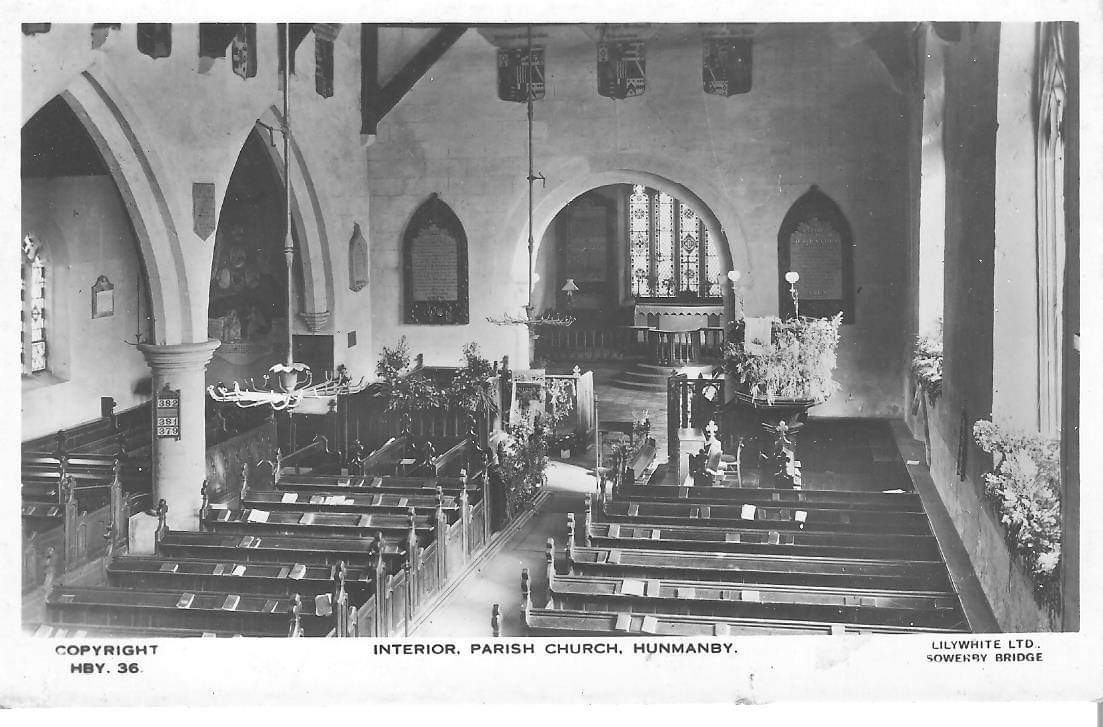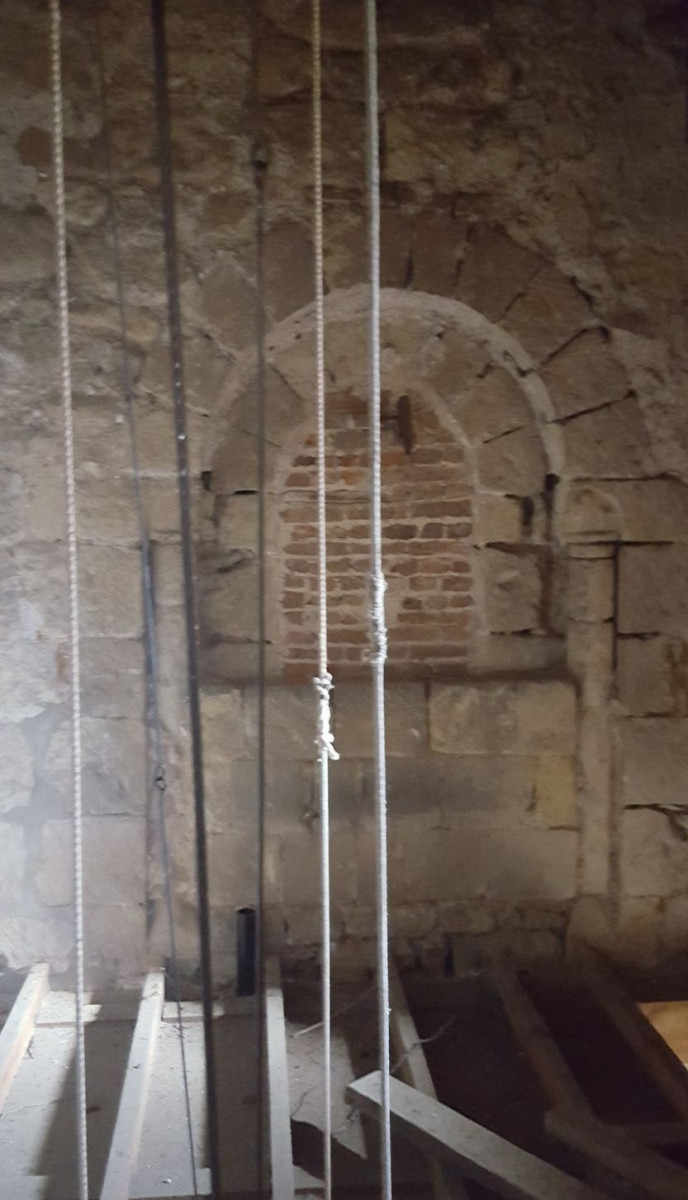 The Doomesday Book of 1086, referring to Hunmanby, says "There is a church there and a priest". From this we know the building is over 900 years old, but almost certainly a Saxon church existed here before that time. William the Conqueror granted land in this area and in Lincolnshire to his nephew GILBERT DE GAUNT, who had fought for him in the invasion of 1066. Gilbert started work building this Norman church with work being continued by his son Walter. The early work of the present building dates, therefore, from the late 11th and early 12th centuries.
The Doomesday Book of 1086, referring to Hunmanby, says "There is a church there and a priest". From this we know the building is over 900 years old, but almost certainly a Saxon church existed here before that time. William the Conqueror granted land in this area and in Lincolnshire to his nephew GILBERT DE GAUNT, who had fought for him in the invasion of 1066. Gilbert started work building this Norman church with work being continued by his son Walter. The early work of the present building dates, therefore, from the late 11th and early 12th centuries.
The Patronage - the right to appoint a priest - was passed by Walter de Grant to the Abbot of Bardney Abbey, at that time a large monastic foundation about 10 miles east of Lincoln. The Abbey held the patronage until the Dissolution of the Monasteries in 1538 when it was annexed by the crown.
In 1623 Richard Osbaldeston took over the living from his brother-in-law Thomas Westrop and it remained a gift of the Osbaldeston family until taken over by the present patrons, The Martys' Memorial trust, in the 1920s and about that time the estate of Hunmanby was broken up.
Many additions to the structure have been carried out in the life of the present building. The original would have had a typical Norman aisle-less construction without seating. People stood or knelt during early medieval services. Evidence of an original entrance door in the west wall can be seen inside the tower.
The lowest part of the tower was built in the early 12th century to add to the church's defences as a place of refuge in times of danger. The upper part of the tower with its gargoyles and pinnacle was added in the 15th century.

There are three bells in the tower which as well as being rung to announce
services also strike for the clock. The three bells are inscribed;
JESUS BE OUR SPEED 1619. This is the treble bell.
SOLI DEO GLORIA PAX HOMINIBUS 1663. The second bell.
VENITE EXHULTAMUS DOMINO S.S. FECIT 1663. The tenor bell.
The three bells were re-hung on a steel grider frame in 1961.

THE CLOCK was installed in 1858 and strikes every quarter, half and the hours and is the work of James Harrison of Hull, great nephew of John Harrsion inventor of the marine chronomiter.
In the 13th century the North Wall was removed and the North Aisle added to accommodate larger congregations. The four stone pillars there - two rounded and two octagonal - date from that time. The south Wall Windows in the Nave replaced the small Norman windows.

THE PORCH, with its cobbled floor, was probably later than the original church and was altered in the 19th century to remove a 'Priest's Chamber' which had been above the porch. On the right hand side of the porch entrance can be see a 'scratch dial', used to indicate the times of services. Within the porch is a large stone coffin, probably Roman or early English, which was dug up in the churchyard.


 VARIOUS RESTORATIONS In 1845 the North Wall was rebuilt and the Pulpit, Vicar's Stall, Clerk's Stall and pews were added. Updating and adding to the building is as ongoing now as it has been over centuries. The choir vestry below the Organ Gallery, the flower kitchen and the seating area at the rear of the church were added in 1984. The addition of a toilet in 1999 was accounted as one of the best improvements ever!
VARIOUS RESTORATIONS In 1845 the North Wall was rebuilt and the Pulpit, Vicar's Stall, Clerk's Stall and pews were added. Updating and adding to the building is as ongoing now as it has been over centuries. The choir vestry below the Organ Gallery, the flower kitchen and the seating area at the rear of the church were added in 1984. The addition of a toilet in 1999 was accounted as one of the best improvements ever!

CHANCEL AREA: THE EAST WINDOW was a gift of Admiral Mitford in 1844 and was  designed and created by Wilmhurst of London. THE FLOOR TILING was given in memorium of the Admiral by his nephews. PIETY is a white marble statue is dated 1770 and one of the major works of Fishers of York. It was given in memory of the Osbaldeston Family whose names are included on the plinth. The remains of the family lie in a sealed vault under the chancel floor.
designed and created by Wilmhurst of London. THE FLOOR TILING was given in memorium of the Admiral by his nephews. PIETY is a white marble statue is dated 1770 and one of the major works of Fishers of York. It was given in memory of the Osbaldeston Family whose names are included on the plinth. The remains of the family lie in a sealed vault under the chancel floor.

In the year 2000 a new 'worship area' was created and a new Lectern and Communion Table made to our own design were added. This new worship area gives plenty of open space for our Worship Group and weddings and Christenings.
There have been FORTY ONE vicars since 1298; no records are available prior to this
History of Clergy at All Saints
Take a tour of the Church Interior


